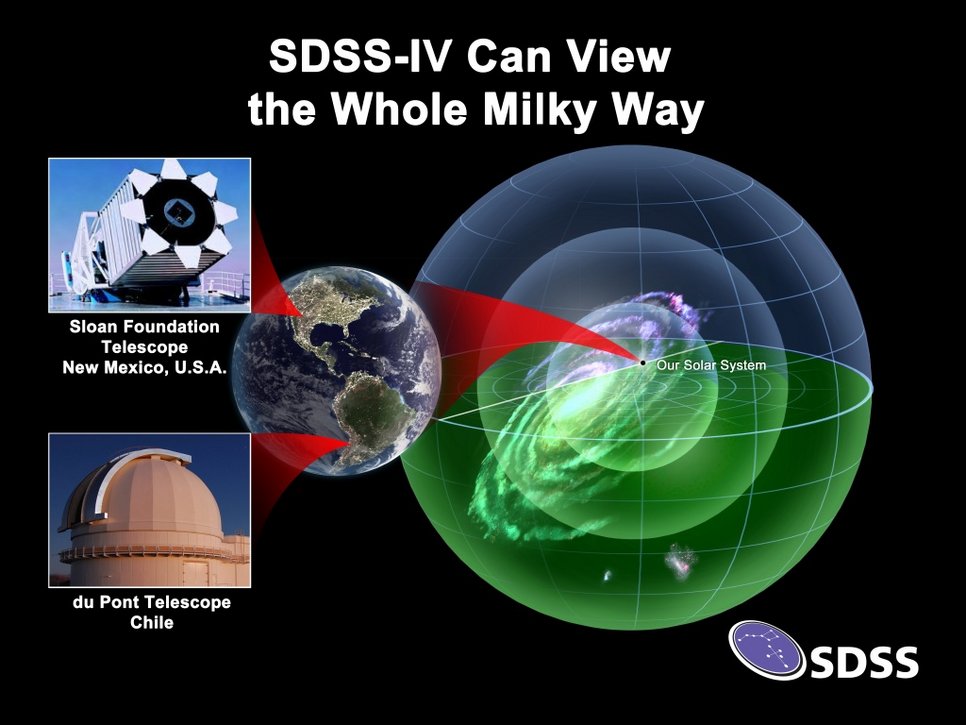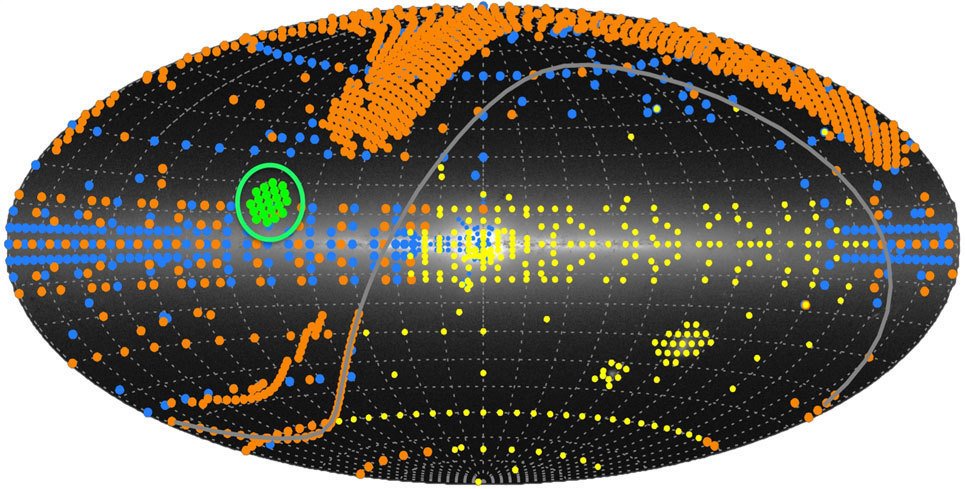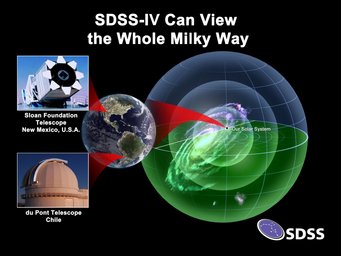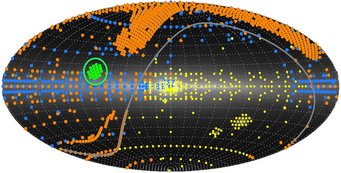
APOGEE-2
APO Galaxy Evolution Experiment North and South

MPIA researchers have used SDSS (SEGUE) data extensively over the last decade to map the Milky Way's stellar and dark matter halo. They have also been able to map the dynamics of the Galaxy's stellar disk in the Sun's vicinity. With SDSS's APOGEE experiment the Galactic disk, dust-obscured at optical wavelengths, has now become accessible to exploration.
APOGEE North and South (also known as APOGEE-2) will explore the formation history of the Milky Way using the “archeological” record provided by hundreds of thousands of its individual stars. The details concerning how the Milky Way grew from small progenitor galaxies are preserved in the patterns seen today in the motions of stars and the abundances of chemical elements they contain. APOGEE-2 will map these patterns using observations of the entire Galaxy from both hemispheres using the Sloan Telescope at Apache Point site in New Mexico and the du Pont Telescope at Las Campanas Observatory in Chile to obtain a complete view of its evolutionary history.
APOGEE-2 is also collaborating with NASA’s planet-finding mission, Kepler, to measure the abundances of carbon, oxygen, nitrogen and iron in planet-hosting stars, to study the role that these elements play in the formation of terrestrial planets.

Key Science Questions
- What is the history of star-formation and chemical enrichment of the Milky Way?
- What are the dynamics of the disk, bulge and halo of the Milky Way?
- What is the age distribution of stars in the Milky Way?
- Are certain properties of stars associated with whether or not they have planets?
To answer these questions, APOGEE-2 relies on stellar spectra taken at near-infrared wavelengths in order to gain a comprehensive view of elemental abundances in stars across the Galaxy and the way they move through space as a function of location.

